The Foreign Legion Madagascar Battalion (BLEM) was an overseas battalion of the Foreign Legion serving in Madagascar between 1957 and 1962. At the time, it was the only operational unit of the Legion not to participate in the Algerian War (1954-1962). Only some 350 volunteers out of the Foreign Legion’s then approximately 12,000 total men were allowed to serve on the island. Later, the BLEM gave birth to two brand-new regiments, the 3e REI in Madagascar and the 13e DBLE in Djibouti.
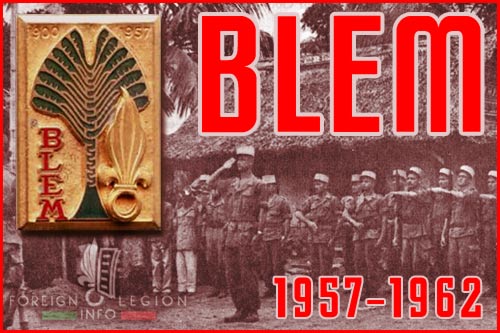
France and Madagascar 1882-1956
Madagascar is an island in the Indian Ocean, about 250 miles (400 km) off Africa’s coast. Nicknamed “Red Island,” it is the fourth largest island in the world. Its inhabitants are the Malagasy people, divided into two sub-groups: the first one descended from Austronesian migrants speaking a Malayo-Polynesian language, and the second descended from East African migrants.
The French made the island their Malagasy Protectorate in 1882. However, Malagasy sovereigns tried to regain their independence. As a result, a new French expeditionary force landed in Madagascar in 1895, including a Foreign Legion battalion. The next year, the French campaign was successfully finished and Madagascar became a French colony. However, the Legion elements would remain on the island for ten years, until 1905.
In 1947, during an ongoing war in French Indochina (1946-1954), a local rebellion affected Madagascar. The legionnaires once again had to be deployed to the island. Within a year, they successfully restored order there. This time, the Legion left the “Red Island” in late 1951. To learn more about this lesser-known campaign, see Foreign Legion in Madagascar in 1947-1951.
In July 1956, the French government promised greater autonomy to Madagascar. To maintain order in the region and to replace a Senegalese Battalion, a new Foreign Legion unit was to be organized and stationed on the island.
DLEM: Foreign Legion Madagascar Detachment
In Algeria on November 1, 1956, a detachment of about 150 legionnaires under Captain Francois Maestrali left the Foreign Legion’s HQ in Sidi Bel Abbes and moved to Algiers, the capital. There, they received military vehicles and boarded a ship, La Bourdonnais. On November 3, the detachment left Algeria for Madagascar. Because of the Suez Crisis that was happening (when the Suez Canal was closed), the legionnaires sailed around West and South Africa.
They landed in Diego Suarez (now Antsiranana), a city in the far north of Madagascar, on November 26, 1956 and officially became the Foreign Legion Madagascar Detachment (DLEM).
The detachment moved to Ankorika, to be placed at an abandoned military camp situated some 6 miles (10 km) northeast of Diego Suarez, close to the beach. There the legionnaires started to restore the installations, (re-)build the roads, sewage system, etc. These activities occupied them for the next few months.
To acclimatize themselves with the nature and climate of the country, the detachment carried out a march in mid-December. They climbed Mountain of the French (Montagne des Français), a forested massif with an old Foreign Legion post built around 1900.
Meanwhile, other Legion reinforcements were arriving in Madagascar, like that of Lieutenant Jacques Poujade with 120 legionnaires in mid-February 1957, or a detachment of 169 legionnaires led by Captain André Hedan three months later, on May 7. With such increased strength, a new Foreign Legion unit would be constituted.
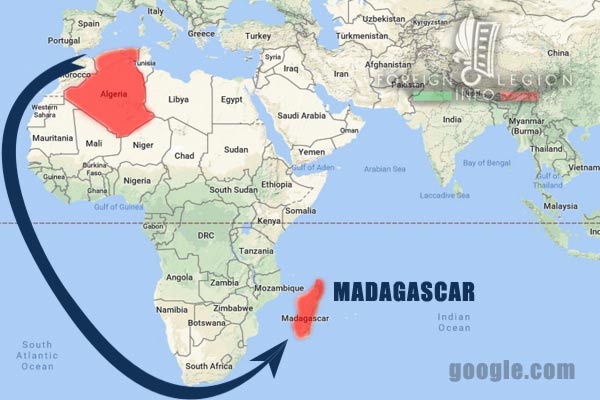


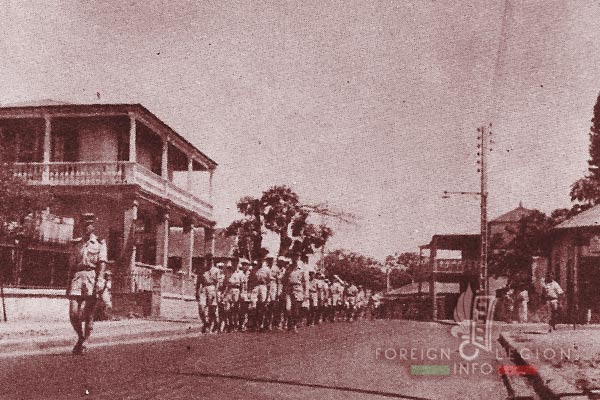
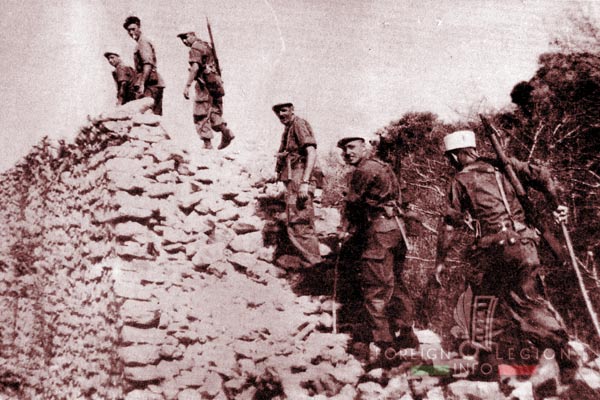

BLEM: Foreign Legion Madagascar Battalion
In Madagascar on May 16, 1957, the DLEM detachment was reorganized and redesignated. It became the Foreign Legion Madagascar Battalion (Bataillon de Légion Etrangère de Madagascar, BLEM).
The battalion was commanded by Major Philippe Jouandon and his deputy, Captain Hedan. It was composed of around 350 officers, NCOs and legionnaires, divided into HQ Company, two combat companies, and an amphibious training center.
The BLEM had the status of an overseas unit (unité outre-mer), like the 5e REI in Indochina in 1930-1945 or the current 3e REI in French Guiana. That means its strength comprised men from all Foreign Legion units, who were rotated every two to three years. As volunteers for an overseas deployment, these men served on a so-called Long Duration Mission (MDL).
To be allowed to leave hostile North Africa for peaceful Madagascar during the ongoing Algerian War, the vast majority of these volunteers had completed at least five years of service. They had to prolong their contract for another three years to be able to join the battalion. This opportunity was seen as a meritorious leave for these lucky men, who had spent so many years in military operations in Indochina and North Africa. Moreover, it meant that an overseas bonus payment waited for them.
BLEM: Composition of the Battalion
HQ Company
Led by Captain Jean Kaleta, the CCAS (Command, Administration & Services Company) was based at Camp Pardes in Diego Suarez. The company was in charge of all sorts of BLEM’s administration work (payments, supplies…), intelligence services, the vehicle fleet, unit workshops, the unit infirmary, etc.
1st Company
Led by Captain Francois Maestrali, this company was based at Camp Ankorika, close to the beach. The company consisted of a HQ platoon and three combat platoons, and was in charge of maintaining order in the northern part of Madagascar.
2nd Company
Led by Captain Francois Bovier Lapierre, 2nd Company was based at Camp d’Ambre, a former military sanatorium from the late 1890s with the nearby French village of Joffreville established around the camp. Located about 15 miles (24 km) southwest of Diego Suarez, this forested place had a cool climate and was favorable for many flowers and for growing vegetables inside the camp. The 2nd Company had the same composition and tasks as the 1st Coy.
Amphibious Operations Training Center
The CIOA (Centre d’Instruction des Opérations Amphibies), led by Lieutenant Jacques Poujade and his deputy Lieutenant Gérard Pons, was placed at Cap Diego, a cape opposite Diego Suarez, about a mile (1,5 km) straight across the natural bay or … 25 miles (40 km) by road.
The training center was established in 1952, to conduct amphibious warfare courses for French units stationed in the region. The three-week courses for approximately 30 men were composed of close-combat training, a swimming course (50 m in combat uniform), amphibious landing exercises with landing crafts or zodiacs (rigid inflatable boats), amphibious assault training, a survival course (12 men had to leave an LCVP landing craft and jump into the sea, then swim in a group) and, finally, an obstacle course in the jungle.
Besides this, CIOA instructors (moniteurs, some 10-15 men) participated annually in a sea mission on board a French navy ship. For 40 days, they sailed the Indian Ocean to maintain a French presence there. During this mission, they usually visited the Comoro Islands or Réunion (French overseas departments northeast and east of Madagascar) and often even the Seychelles (then a British crown colony).
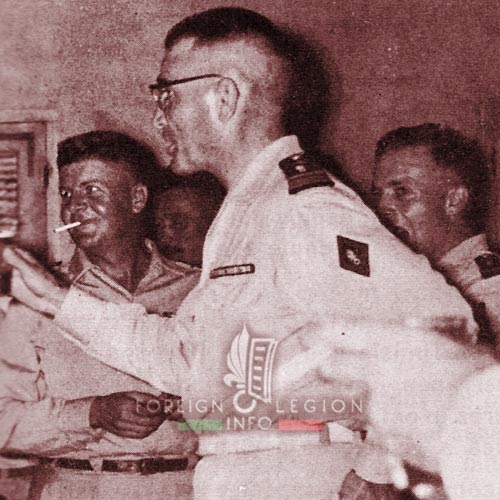




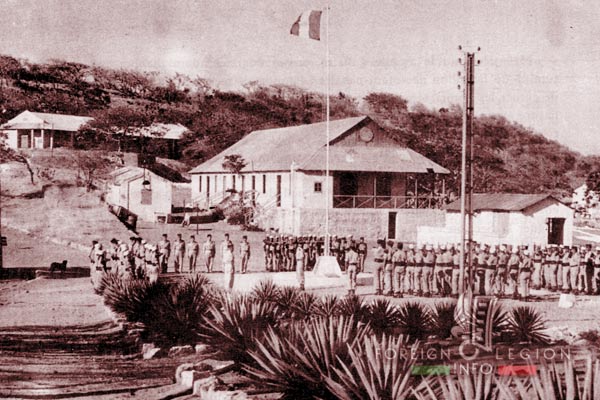
BLEM: Equipment of the Battalion
The BLEM legionnaires were equipped with their common weapons: MAT-49 submachine guns, MAS-36 and MAS-49 rifles, and hand grenades. As for vehicles, they used U.S. GMC trucks and Jeeps, as well as M3 Scout Cars armed with the “12.7” machine gun (a French nickname for .50 cal M2 Brownings). A number of the Jeeps were equipped with 75 SR guns (U.S. M20 recoilless rifles) or 120 mm mortars.
Unlike in North Africa (Morocco, Tunisia, and Algeria), the BLEM legionnaires were not equipped with Dodge cars (4×4 or 6×6) and AMM8 (M8) armored cars.
The legionnaires in Madagascar wore a green standard combat uniform (Model 1947). As headgear, they wore either a French helmet, a bush hat or, more frequently, a classic khaki-covered kepi (during both operations and maneuvers). The BLEM was the only combat unit of the Foreign Legion not to replace the covered white kepi with a green beret on operations, as did the other Legion units in Algeria between late 1959 and early 1960. On Madagascar, the covered white kepi was still in use on operations even in late 1961.
For communication, BLEM legionnaires were equipped with the Motorola SCR-300, a battery-operated portable radio transceiver. Every company received 265 lb (120 kg) of batteries for a year.
During amphibious exercises and maneuvers, several landing crafts were used – LCVP (Landing Craft, Vehicle, Personnel), LCM (Landing Craft Mechanized), LCT (Landing Craft, Tank). An LCVP was also used for the CIOA amphibious courses.
BLEM: Missions and activities of the Battalion
In 1957, for operational purposes, the Foreign Legion Madagascar Battalion was assigned to Brigade North (Subdivison Nord) under Colonel Monguilan.
Like all Foreign Legion units at the time of the French Empire (and like their predecessors from the ancient Roman Empire), even the Madagascar Battalion legionnaires were tasked with two main missions: maintaining order in the region and carrying out construction work in support of both local and military infrastructure. The latter comprised mainly the tracing and building of roads, bridges, and military installations, and even the laying of telephone cables.
BLEM legionnaires also guarded important military and government buildings in Diego Suarez.
The companies lived as semi-autonomous units. To preserve unit cohesion, the BLEM leadership organized regular sports competitions for its companies, for example in volleyball, table tennis (ping-pong) or shooting.
Bush Tours
Since May 1957, the unit had been conducting so-called bush tours (tournée de brousse). This was a military patrol in the countryside of northern Madagascar. A tour took roughly 10-20 days and was about 180-220 miles long (300-350 km). For these tours, the men were (usually) divided into four autonomous detachments, to cover as much territory as possible.
Bush tours were organized between April and November, during “winter time” in the southern hemisphere, when the rainy season was over. Their aim was to show a constant French presence, to control roads and bridges, and to search out suitable places for drop zones. The legionnaires also used these outings to familiarize themselves with the country and make contact with the local population.
Exercises and maneuvers
Every year, several joint military exercises and maneuvers occurred in northern Madagascar, organized by the brigade. BLEM legionnaires participated alongside French marines, paratroopers, artillerymen and infantrymen. Each of these exercises and maneuvers lasted from 5 to 20 days.
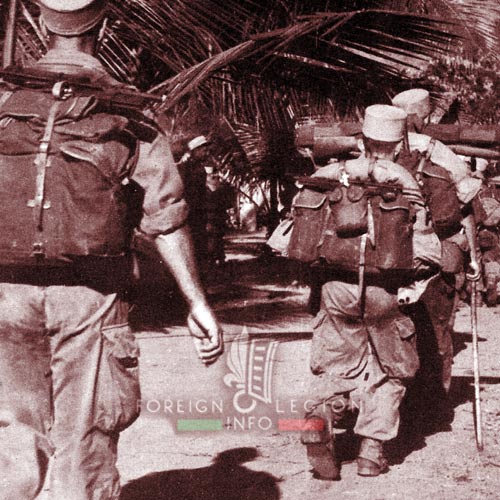
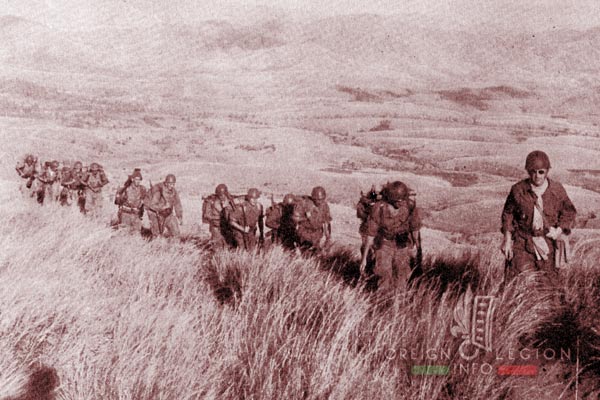
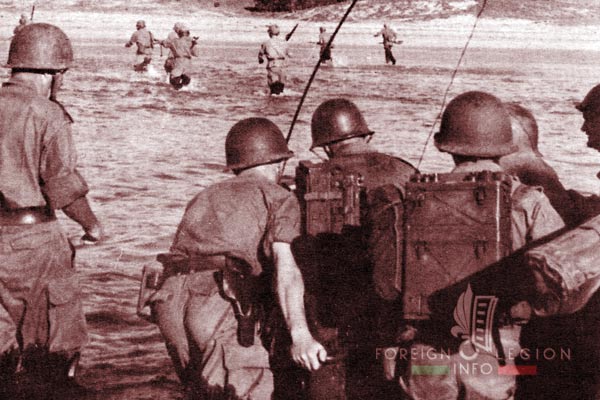
BLEM: Foreign Legion in Madagascar in 1957
In early May, the very first bush tour took place, carried out by Captain Maestrali and about 100 men of what was at first the DLEM, but was transformed into the BLEM during the tour. Their three-week march across the island went from Ankorika through Anivorano, and finished in Mangoaka. The legionnaires covered about 220 miles (350 km). Zebus – known as indicine cattle or humped cattle – were used as supply carriers.
On May 19, a small detachment of 31 men arrived from Algeria. This would be the last reinforcement for the BLEM that year.
In June, Lieutenant Pons and a group of CIOA instructors did a climb on Maromokotra, the highest mountain in Madagascar (2,876 m); it is situated in the Tsaratanana Massif, in the northern part of the island.
On Bastille Day (July 14), the BLEM paraded in Diego Suarez for the first time. The same day, the unit received its battalion fanion and fanions for its companies.
By the end of the year, the battalion possessed its own fanion and marching song, and on Christmas Eve of 1957, the legionnaires received also the battalion distinctive insignia. As a matter of interest, a lot of men wore another insignia on their left shoulder board, to mark the original regiment they had come from. This post-WWII tradition in the Legion disappeared completely in the 1970s.
BLEM: Foreign Legion in Madagascar in 1958
In 1958, like any other overseas unit, the BLEM organized first courses for its own future corporals and sergeants, as they couldn’t be trained in Algeria due to the long distance and travel costs. In late April, 14 new corporals (out of 29 initial candidates) and 11 new sergeants (out of 18) obtained their promotions.
In early June, the battalion was reinforced once again.
In late August, Madagascar was visited by General Charles de Gaulle. Earlier that year, a military coup d’etat had occurred: the May 1958 Putsch in Algiers. The coup was organized by French Army generals in the capital of Algeria, in support of de Gaulle. The general was to be installed as a new French leader, with the aim of saving the French Empire and preventing the abandonment of Algeria.
Because of the visit, the BLEM was transported to Tananarive, the capital of Madagascar (called Antananarivo today) to take part in a large military parade in honor of the then popular leader.
A month later, on September 28, a constitutional referendum announced by de Gaulle took effect throughout the French Union, which allowed the people in Algeria and other French overseas departments and territories to vote for a new joint constitution. During the referendum, BLEM legionnaires protected sensitive places in Diego Suarez.
Like the previous year, the men of the battalion participated in several joint military exercises and maneuvers of their brigade even in 1958.
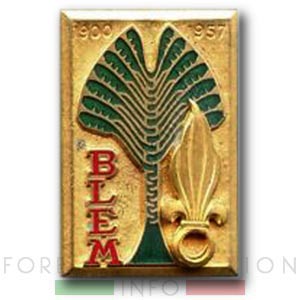
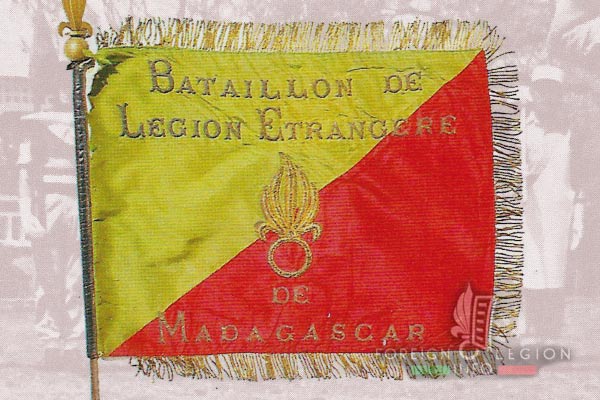

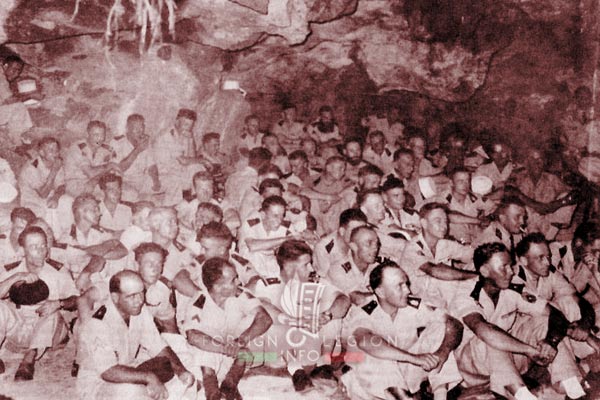
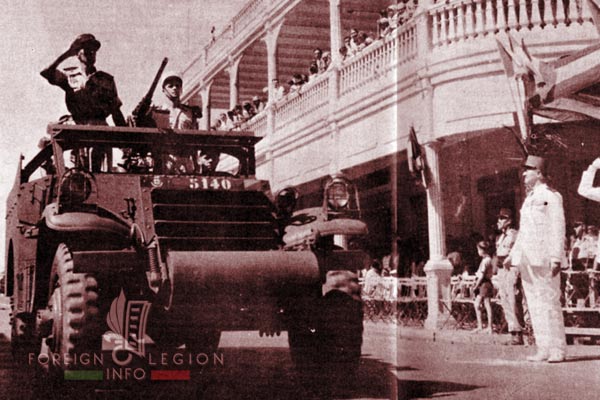
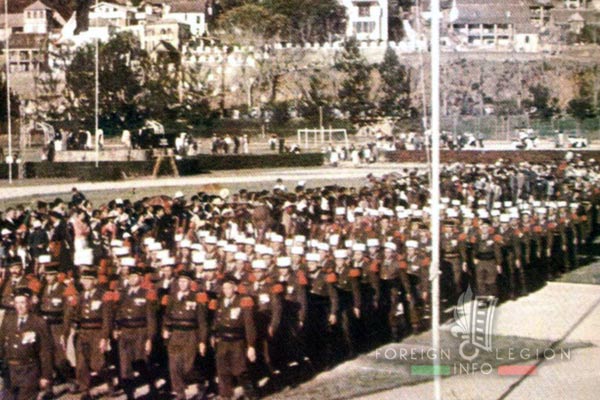
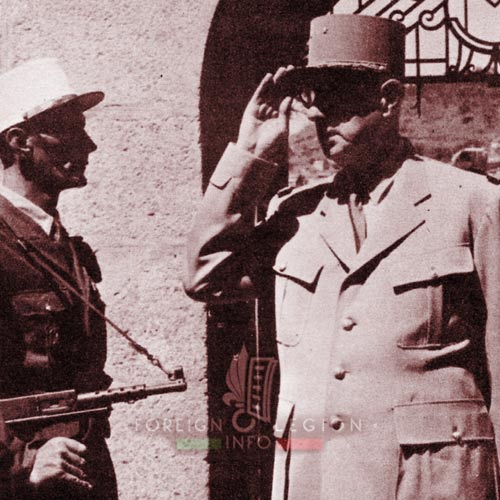

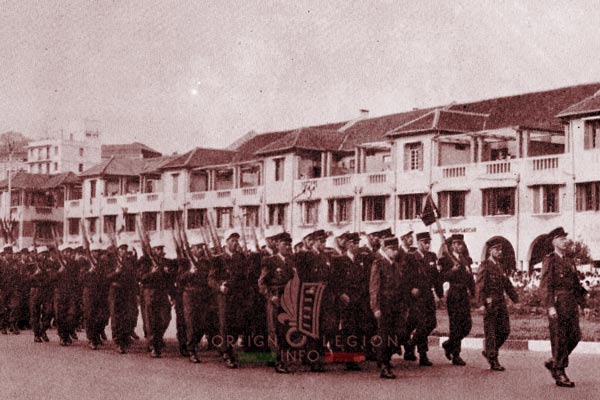
BLEM: Foreign Legion in Madagascar in 1959
The year 1959 marked the rotation of the men. Original elements of the former DLEM and the later BLEM finished their prescribed stay in Madagascar and had to return to war-torn Algeria, after 30 months spent in the peaceful paradise.
The first rotation occurred in June, when Captain Maestrali and 120 NCOs and legionnaires left Madagascar. They represented the very first detachment from November 1956. Fresh reinforcements replaced them the same month. Back in Algeria, Captain Maestrali would be assigned to the 5e REI. He moved with that regiment to French Polynesia in 1963.
Also in June, Captain Hedan, now promoted to deputy commander, temporarily replaced Major Jouandon as the new head of the BLEM.
On July 21, Captain Olivier Desjeux and about 130 NCOs and legionnaires left Sidi Bel Abbes in Algeria to deploy to Madagascar. Captain Desjeux was an experienced officer. He had served with the Foreign Legion since 1946, in Indochina, Morocco, Libya, and Algeria.
Another group of 12 NCOs and 87 legionnaires left Madagascar in mid-September. They were replaced by new drafts arriving on the island in October.
In November, the freshly promoted Major Olivier Desjeux took command of the BLEM. Captain Bertrand de La Bigne de Villeneuve became his deputy.
The same month, all remaining original elements of the battalion left Madagascar. The newly promoted Major Hedan and 5 officers, 25 NCOs and 101 legionnaires would return to Algeria. The rotation of the whole BLEM was complete.
Like Captain Maestrali, Major Hedan would also join the 5e REI. He later became a deputy commander of the 5e RMP (ex-5e REI) in Tahiti, French Polynesia.
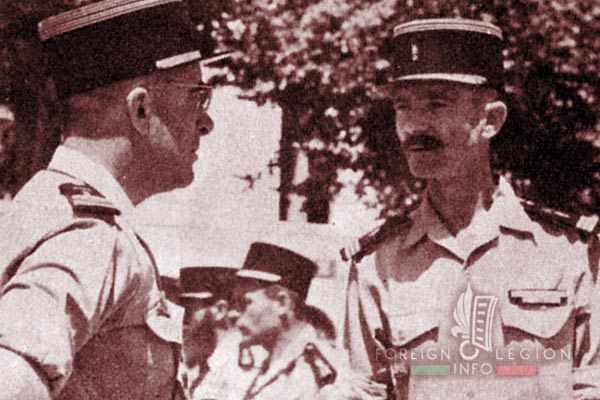

BLEM: Foreign Legion in Madagascar in 1960
Following the September 1958 Referendum, the Malagasy Republic was officially established. It became independent in late June 1960, as an autonomous republic within the newly created French Community. The republic existed until the proclamation of the Democratic Republic of Madagascar in 1975.
The same year, Brigade North became Brigade No. 3 (Subdivision Nº 3), led by Colonel Morel.
Like every year, BLEM legionnaires were involved in the brigade’s joint military exercises and maneuvers.
BLEM: Foreign Legion in Madagascar in 1961
The year 1961 saw three important events for the BLEM: deployment to what is today Djibouti, transformation of the CIOA into the CID, and the second and last rotation of the men.
In early March, the 2nd Company, BLEM under Captain Serge Dotte left Madagascar and moved to French Somaliland, then a French overseas territory in the Horn of Africa, bordered with Somalia and Ethiopia. This strategically important land, nicknamed the gate to the Red Sea, would gain independence in 1977 and be renamed Djibouti. The 2nd Company, BLEM remains the very first unit of the Foreign Legion ever stationed there.
The company landed in Djibouti City, the capital of French Somaliland, on March 18, 1961. They were placed at Oueah (also known as Wea), a small town situated some 22 miles (36 km) west of the capital. There the legionnaires would carry out the same tasks as in Madagascar. They would maintain order and keep French presence in the region, under the designation of an overseas unit consisting of rotating personnel.
In late April, a new putsch of generals took place in Algiers. This time it was against de Gaulle, who was by then the French President and was at that moment considered a traitor to France for his decision to give Algeria independence. Several units of the Legion were involved in the putsch, which eventually failed. Because of that, the BLEM in Madagascar and Djibouti was the only Foreign Legion unit allowed to publicly commemorate Camerone Day (30 April), the Legion’s most important holiday, marking the famous 1863 Battle of Camerone in Mexico.
Also in 1961, the CIOA at Cap Diego was reorganized. It became the Landing Training Center (Centre d’Instruction au Débarquement, CID). Apart from ongoing amphibious courses, a new jungle trail (Piste de la jungle) was built within the center.
By the end of the year, new reinforcements came to Madagascar to replace those legionnaires who had already been stationed on the island for two and a half years, since 1959.
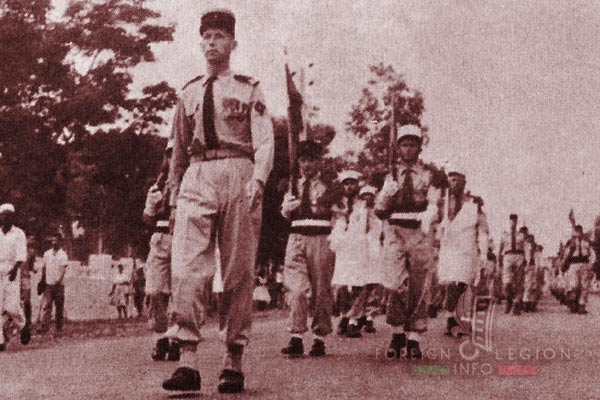
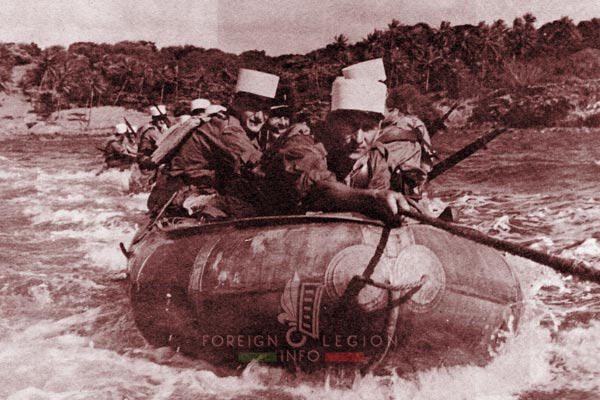

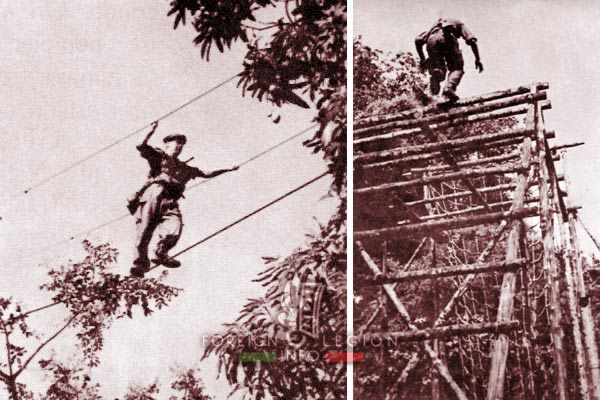
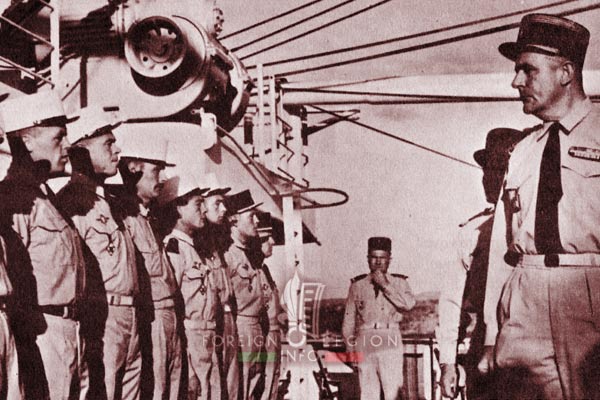

BLEM: Foreign Legion in Madagascar in 1962
On January 16, Major Louis Fournier took command of the BLEM. At that time, the composition of the battalion was as follows:
- Commanding Officer: Major Louis Fournier
- Deputy Commander: Major Victor Chapey (??)
- HQ Company: Captain James Quinclet
- 1st Company: Captain Henri Pourcin
- 2nd Company: Captain Louis Corbel
The battalion was assigned to Group No. 2 (Groupement Nº 2, ex-Brigade No. 3), led by Colonel Gouzes.
Meanwhile, the Évian Accords treaty was signed in Algeria in mid-March 1962. The Algerian War was over. This fact led to a large reorganization of the French Army in North Africa, including the Foreign Legion. The Legion’s strength in Algeria would be considerably reduced.
On the other side, following those changes, the Legion detachments in Madagascar and French Somaliland were to be reinforced. Six weeks after the Algerian War was over, these plans came to fruition.
As a reward, the two most “significant” units of the Legion, the legendary 3e REI and 13e DBLE, would be dissolved in Algeria and reborn as completely new overseas units in Madagascar and French Somaliland respectively. As for the original 3e REI in Algeria, the regiment was transformed into the 3e BMLE and sent to France to build a new Motherhouse for the Legion there.
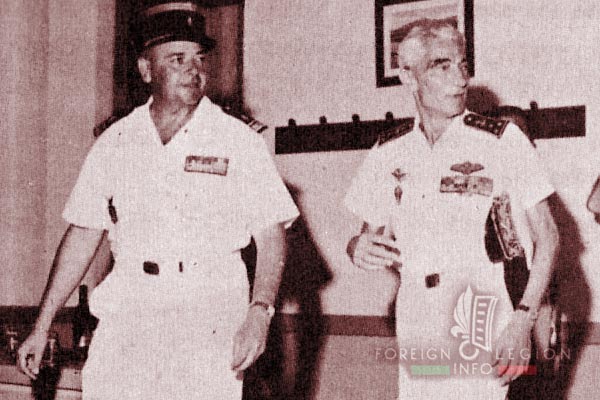
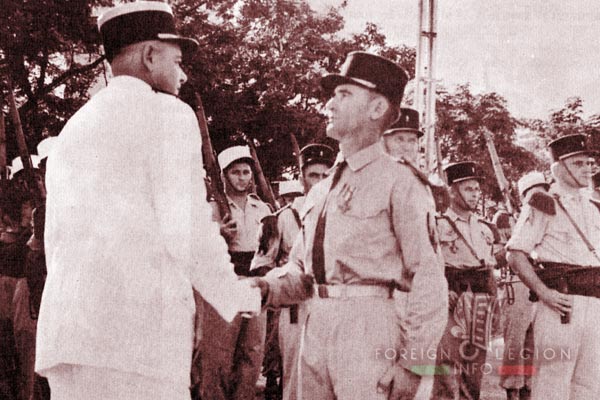
BLEM: Transformation into 3e REI and 13e DBLE
On May 1, 1962, the BLEM was officially divided into two parts. The little-known, overlooked battalion gave birth to the brand-new 3e REI and 13e DBLE, units that had covered themselves with glory in the previous decades.
In Madagascar, the BLEM’s HQ and 1st Company were redesignated as the Provisional Battalion, 3e REI. They became HQ and 1st Company of the new 3e REI, led by Captain Jean Grangeon (since May 5) and Captain Henri Pourcin respectively.
In French Somaliland (now Djibouti), the 2nd Company, BLEM laid the foundation for the Provisional Battalion, 13e DBLE. The very first Foreign Legion unit stationed in this territory was redesignated and became the 1st Company of the new 13e DBLE. Still under Captain Louis Corbel, the unit itself would represent the entire freshly-created provisional battalion, until mid-May.
In the following months, both Provisional Battalions were reinforced and, in late 1962, they were eventually redesignated as the new 3e REI and 13e DBLE. Each of these newly recreated regiments comprised four combat companies, being composed of volunteers to be rotated every two to three years.
Major Louis Fournier, the last commander of the BLEM, continued as the head of the Provisional Battalion, 3e REI. In August 1962, he became a deputy commander of the new 3e REI, led by Lt. Colonel Mattei at the time. Major Fournier left Madagascar in May 1964.
The CID training center would be run by the 3e REI until the regiment’s withdrawal from Madagascar to French Guiana in 1973. At the time, the regiment left a small independent detachment on the nearby Comoro Islands.
In 1976, the detachment was stationed in Mayotte, the pro-French part of the Comoros. Thus the unit coincidentally became the DLEM again, as it was known twenty years earlier. The Mayotte Detachment continues to maintain a Legion presence in the region, even nowadays (2022).
Main information & images sources:
Képi blanc magazines
Foreign Legion bulletins
Wikipedia.org
———

You can support this website at any time through our store. Thank you.
EU-based readers can visit our EU-based shop, to avoid import charges.
—
Foreign Legion’s other disbanded units after 1945:
DLEC: Foreign Legion Comoros Detachment
61st Engineer-Legion Mixed Battalion
3e BMLE: 3rd Foreign Legion Task Force
4th Foreign Infantry Regiment
5th Foreign Regiment
6th Foreign Infantry Regiment
—
The page was updated on: May 20, 2022
